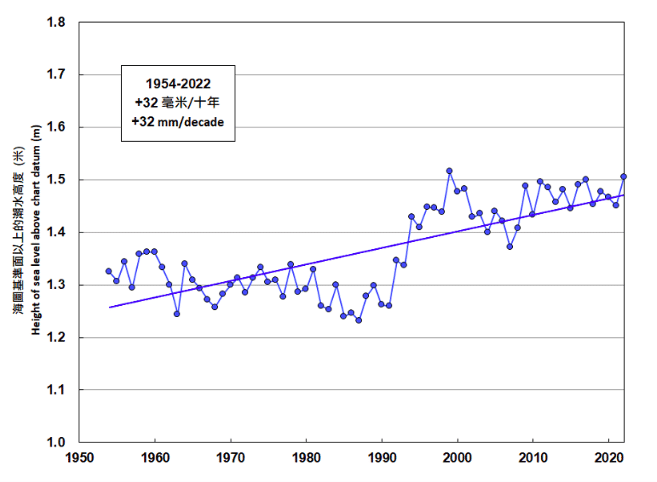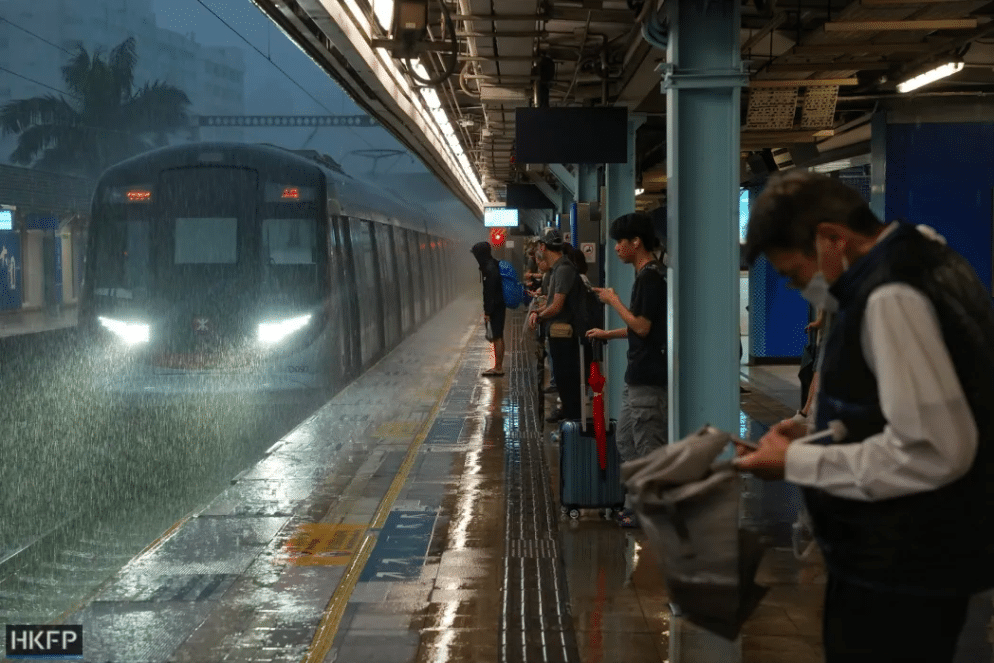Hongkongers woke up to submerged streets, shopping malls, and metro stations on Friday following record-breaking rainfall that prompted local authorities to shut schools and businesses. Last month, local scientists warned that Hong Kong will experience heavier and more frequent extreme weather events in the future as the climate crisis deteriorates.
—
Record-Breaking Rain Batters Hong Kong
Hong Kong woke up to submerged streets, shops, and metro stations, as torrential rain deluged the city in the early hours of Friday, prompting authorities to shut schools and businesses and suspend several transport services.
Between 11 pm HKT on Thursday and midnight on Friday (1500 to 1600 GMT on Thursday), the city recorded 158.1 mm of rain, the highest hourly rainfall since records began in 1884, prompting the city’s weather bureau to issue the highest “black” rainstorm warning. During the night, the city’s leader Chief Executive John Lee instructed a number of departments – including the Drainage Services and the Highways Department – to “respond with all-out efforts.”
According to the Hong Kong Weather Observatory (HKO), the torrential rain was brought by the “trough of low pressure associated with the remnant of [Typhoon] Haikui,” which left a trail of destruction in Taiwan before making landfall in China’s Fujian province earlier this week.
Hong Kong was hit by widespread flooding on Friday as record-breaking rain paralysed the city. The Observatory recorded the highest one-hour rainfall since records began in 1884. Full story: https://t.co/xgbtoreVGt pic.twitter.com/ag0wuo65Rc
— Hong Kong Free Press HKFP (@hkfp) September 8, 2023
As heavy rain began in the densely populated city of 7.5 million, the government also warned that “there may be a risk of flooding” in its northern New Territories district, as the neighbouring city of Shenzhen in Mainland China announced it would release water from a reservoir from midnight on Friday, giving Hong Kong authorities only 16 minutes notice.
“There may be a risk of flooding in some parts of the New Territories. Various government departments, including District Office (North), Drainage Services, Police, Fire Services, Water Supplies, and Social Welfare have been informed in order that they can take any necessary measures,” the government said in a press release.
The city’s Mass Transit Railway (MTR) announced that it would partially suspend service on one of its lines after the Wong Tai Sin district’s station was flooded, as videos circulating on social media show.
🇭🇰🌧️🌧️🌧️🌧️
Wong Tai Sin Station.
Shared many, many times online. https://t.co/LzzrEla1XV pic.twitter.com/FEHFH1Ic9f
— Aaron Busch (@tripperhead) September 7, 2023
As of 8 am on Friday, the Geotechnical Engineering Office (GEO) had received seven landslide reports, six on Hong Kong Island and one in the New Territories.
Hong Kong’s Changing Climate
The record-breaking rainfall came just a week after Super Typhoon Saola paralysed Hong Kong, as authorities issued Hurricane Signal No. 10 – the city’s highest storm signal – for the first time since 2018. Despite hundreds of reports of fallen trees and widespread flooding, no casualties were reported.
Last month, local scientists warned that climate change will bring more frequent and intense extreme weather events to the city, including supercharged typhoons and prolonged drought as the climate crisis intensifies.
Recent reports show that global warming is already affecting the city. In a statement released on Monday, HKO said that last month was the warmest August ever recorded, adding that this summer was also hong Kong’s hottest since records began in 1884. The Observatory attributed last month’s record-breaking temperatures to the “warmer than normal sea surface temperature over the northern part of the South China Sea and a stronger than usual southwesterly flow in the lower atmosphere over the south China coast.”
“The monthly mean temperature of 29.7 degrees and monthly mean minimum temperature of 27.8 degrees were respectively 1.0 degree and 1.1 degrees above their normal levels, and both were the highest on record for August,” the statement reads.
Besides rising temperatures, scientists warn that Hong Kong will also experience climate change through rising sea levels. According to a 2021 analysis by the city’s weather bureau, under the very high greenhouse gas emissions scenario, Hong Kong’s sea level is set to rise anywhere between 0.57 – 1.08 metres by the end of the current century. On average, the mean sea level at Hong Kong’s Victoria Harbour rose at a rate of 32 mm per decade during 1954-2022.

Annual mean sea level at Victoria Harbour, Hong Kong (1954-2022). Image: HKO.
This is particularly worrying for a densely populated coastal city like Hong Kong. Soaring sea levels have great potential to wreak havoc among low-lying and coastal areas, threatening the livelihoods of nearby citizens through intense floods.
Featured image: Kyle Lam/HKFP.
You might also like: 6 Biggest Environmental Issues in Hong Kong in 2023


















